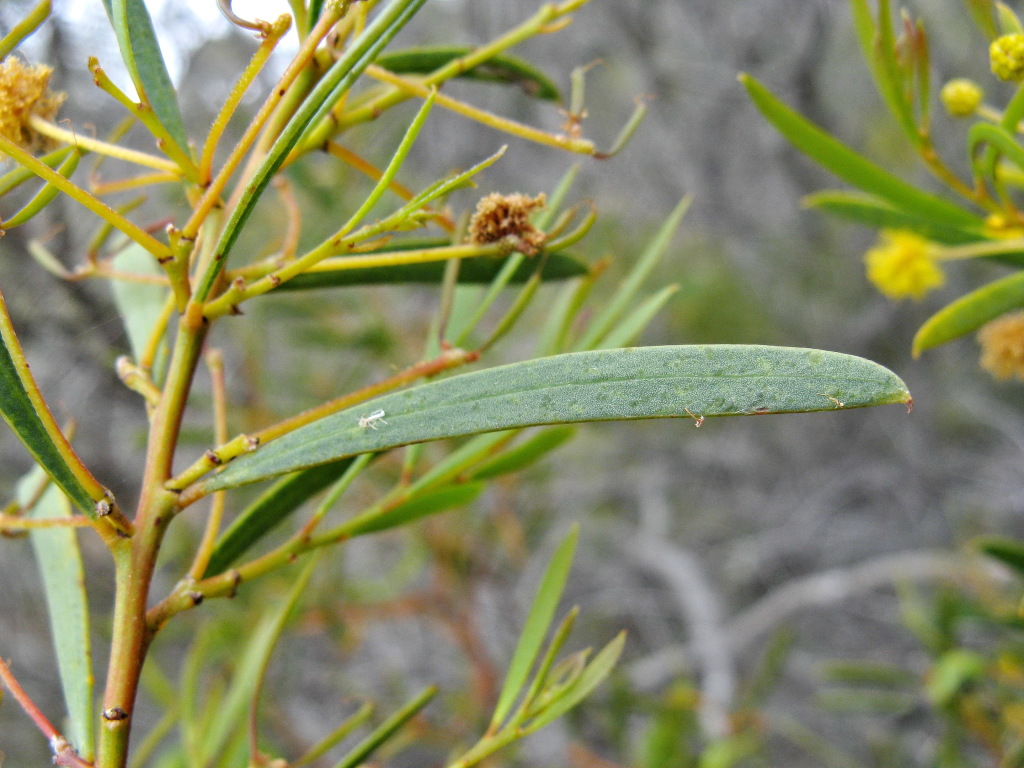Acacia halliana
MaslinBushy, spreading shrub to 2.5 m high; branchlets flattened and more or less angled apically, soon terete and ribbed, with appressed, minute hairs. Phyllodes usually oblanceolate to narrowly oblong or narrowly elliptic, 3–7 cm long and 4–15 mm wide, coriaceous, straight to slightly curved, usually glabrous, obliquely apiculate-mucronate; 1-veined; stipules 2–3 mm long, brittle, often only bases persistent; gland 5–12 mm above pulvinus. Peduncles 5–10 mm long, commonly 2 per node or sometimes on rachis to 1 mm long, glabrous; heads globular, usually c. 6 mm diam. and 35–55-flowered, golden. Flowers 5-merous; sepals free. Pods usually submoniliform, sometimes curved to sigmoid, occasionally twisted at constrictions, to 6 cm long, 3 mm wide, firmly chartaceous to thinly crustaceous, glabrous, black; seeds longitudinal, oblong to elliptic, 3–4 mm long, dull, dark brown, aril terminal, conical and creamy-white. Flowers Aug.–Nov.
LoM, MuM, Wim, VRiv, RobP, MuF. Also SA, NSW. Grows mostly in mallee communities in sand or light brown calcareous loam.
Formerly included within A. microcarpa but distinguished from that species in having stipules prominent (when not broken), phyllode apices acute and eglandular, branchlets usually minutely hairy, arils conical, and flower heads generally larger.
Plants previously included in this species with glabrous branchlets, small phyllodes (2–4 cm long, 3–6 mm wide), smaller (c. 4 mm diam.) heads with 16–25 flowers, and terete pods, not or barely constricted between the seeds are now recognised as a distinct species, A. simmonsiana.
Entwisle, T.J.; Maslin, B.R.; Cowan, R.S.; Court, A.B. (1996). Mimosaceae. In: Walsh, N.G.; Entwisle, T.J., Flora of Victoria Vol. 3, Dicotyledons Winteraceae to Myrtaceae, pp. 585–658. Inkata Press, Melbourne.
 Spinning
Spinning


